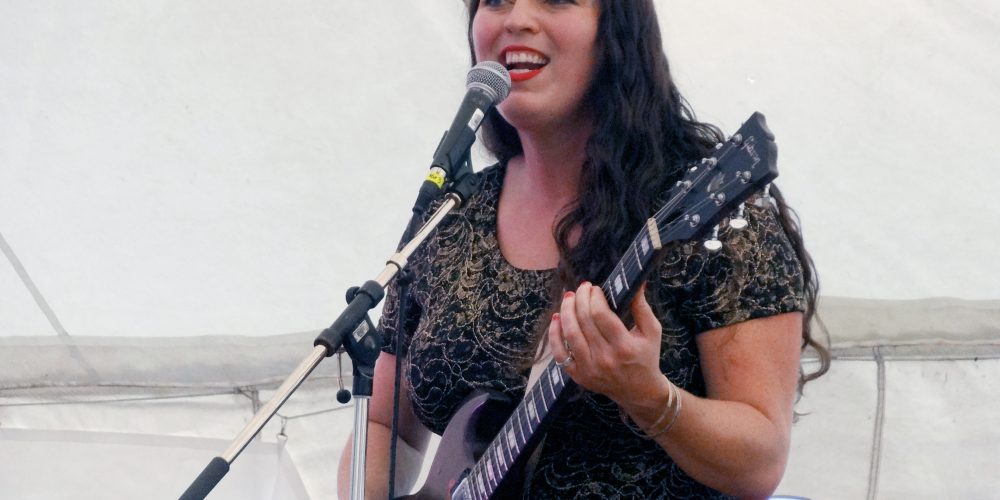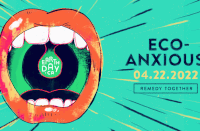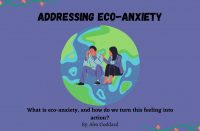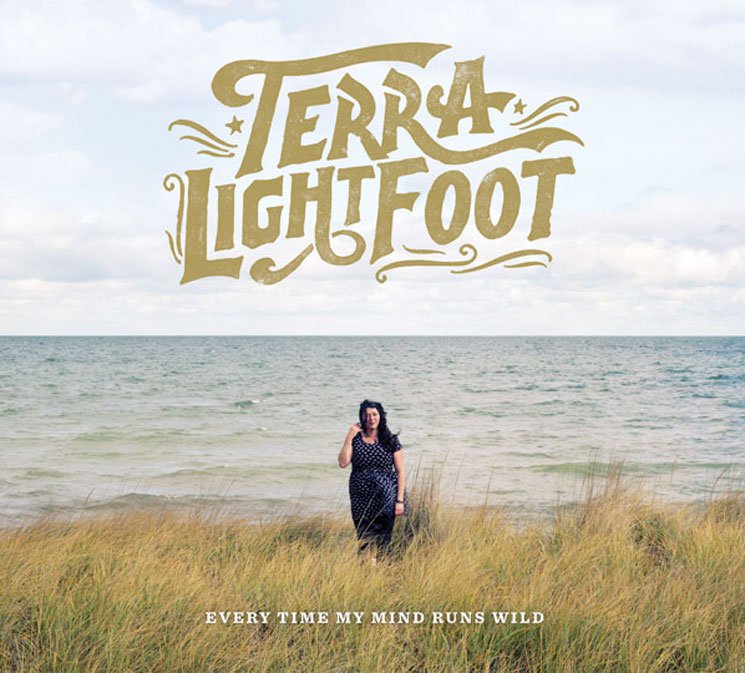Terra Lightfoot played at Hillside Music Festival and the Harvest Picnic this summer. These are two festivals that I keep my eye on because they weave environment so beautifully into their occasion. Both keep their event footprint sustainably light, and they attract artists (and patrons) who care about the planet (along with the feather, fur, fin, and homo sapien communities that populate it).
Terra Lightfoot played at Hillside Music Festival and the Harvest Picnic this summer. These are two festivals that I keep my eye on because they weave environment so beautifully into their occasion. Both keep their event footprint sustainably light, and they attract artists (and patrons) who care about the planet (along with the feather, fur, fin, and homo sapien communities that populate it). After she wowed both venues, I caught up with Lightfoot to turn the focus even more toward the fascinating juncture of art and environment.
I think networking across cities in Canada is so important to see how municipalities are managing and protecting our communities and our environment.
A\J: Where do you see the strongest intersections of music and environment?
Terra Lightfoot: Just coming off a Western Canadian tour with the band, I saw how much the environment can influence my work as a musician. In a creative sense, I think music intersects with the environment at every turn. I surround myself with music that is influenced and makes reference to the natural world. I think there’s much more potential for musicians to be involved in environmental initiatives. Sarah Harmer certainly seems to be doing a good job at melding her environmental concerns with her music and we can all take cues.
A\J: You have lived in Toronto and are happily back in Hamilton now. That’s what any community needs: folks who get involved to care for their place. Is there a citizen-led group or initiative that really surprised or impressed you?
TL: Yes! Taking a cue from Art Crawl, local activist-designer Matt started a clean-up initiative called Garbage Crawl and a parallel property standards initiative called By-Law Crawl. Both focused on different areas of the city. I don’t know if they are still going. Also we’ve got community gardens all over the place, and the Hamilton Fruit Tree Project, a volunteer-run fruit tree harvesting team who donate the food they harvest from trees in the city to local food banks. I remember finding out about that after walking home from the grocery store and seeing someone picking mulberries from a tree. I tried one and was hooked. It was surprising to realize that there are fruit-producing trees in the city. Last we’ve got the Mustard Seed Co-op, which is a grocery store supporting local farmers and products. It was formed by the community, and I think there was $100 membership buy-in to help them get started. Pretty amazing!
A\J: Hamilton and Kitchener have some similarities. Both have former glories and have struggled to transcend the challenges of their city centres. Both cities are changing in exciting ways. Do you see music playing a major role in Hamilton’s (dare I label it) renaissance?
I certainly do. Musicians in Hamilton have an international reach with their voices. We have Arkells, Tom Wilson, Jessy Lanza, Junior Boys, Elliott Brood, The Trews … and even without those nationally or internationally successful musicians, we still have a strong and supportive network of local musicians, music lovers and venues. In order to thrive, a city needs a living art and music community at its core to influence and inform the broader city culture. Hamilton is a former industrial town now running on art and music. “Art is the New Steel” is a popular saying around here.
A\J: What kind of city planning initiatives are you seeing that are strengthening community in Hamilton. What can other communities learn from Hamilton?
I think that one thing all communities can share is a desire to learn. No one has it perfect. We are planning to incorporate LRT into our transit system soon, which will be great! I see our annual arts festival, Supercrawl, helping the community and bringing positive attention to Hamilton. It’s a giant free festival so anyone can go and see art, music, children’s programming, circus performances – to me, it’s an enriching experience that I am always surprised doesn’t have a ticket price. Our city is also lucky to have some very progressive, newly elected councillors in Matthew Green and Aidan Johnson. Check them out. These guys head into other cities to learn their processes to better ours. I think networking across cities in Canada is so important to see how municipalities are managing and protecting our communities and our environment.
A\J: What’s the biggest challenge for the city right now? And what would help remedy this?
TL: I think we need to find more ways to help low-income families in our community. We do support them with food banks, food drives, meals at shelters, … but I think they are the most important people to support in a city. Especially kids. My friend worked at an after-school program where they were brainstorming which snacks they would like and one of the kids wrote “peaches (real).” That broke my heart. t’s so hard to eat healthy when you’re not getting enough to eat. Who wants a salad when they haven’t eaten all day? We have breakfast clubs in schools but the issues surrounding poverty are so dense. It’s hard to support and encourage folks who are disadvantaged economically. I think the folks who are able to should be volunteering to help, whether that means donating money, food, clothing or time. If everyone helped we would be so much better prepared to deal with these issues. The community can support itself with the resources we have, but I think we all need to take a little responsibility for our neighbours and help however we can.
A\J: The Ontario Greenbelt is now at its 10-year review. Have you personally, or someone close to you (positively or negatively) been touched by the Greenbelt initiative to protect the natural and farmlands between and around cities in Southern Ontario?
TL: Well, I come from Waterdown, which is part of the Greenbelt. A lot of the farmland there has been developed into subdivisions, even since I was a kid. I feel it would be a rare occurrence to be negatively affected by an initiative to protect natural farmlands unless you’re a developer. On the positive side, I’ve met some great friends in the area who own and operate farms. They are patient and calm people. They put up with a lot of uncertainty financially and otherwise because of so many things. I’m sure it would be hard for them to pursue farming when municipalities are always trying to replace their fields with airports and big box stores. I think there are initiatives like Farm Crawl in Hamilton that are bringing more attention to these awesome people and getting folks more involved in the conversation about taking care of and properly managing the land we have. And for reference I’m talking about ManoRun Organic Farm and Plan B Organic Farm (which supplies most of Hamilton with organic food boxes). Alvaro from Plan B actually introduced me at the Harvest Picnic!
A\J: What song lit a fire in your belly to ferociously love & fight for this planet? I recognize potential hyperbole here, but if you will, please share your favourite song that inspired you from an environmental perspective.
Marcia Ruby is the publisher emerita and creative director of Alternatives Journal.














